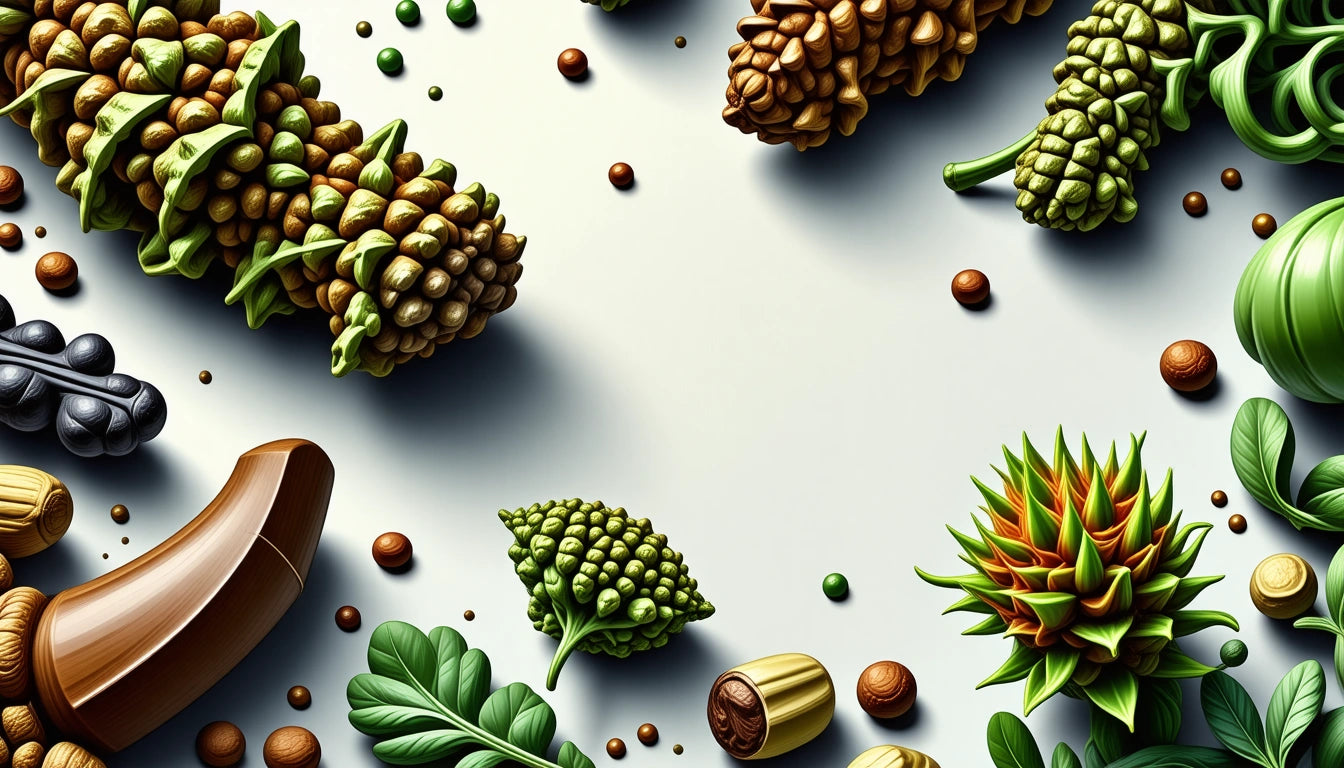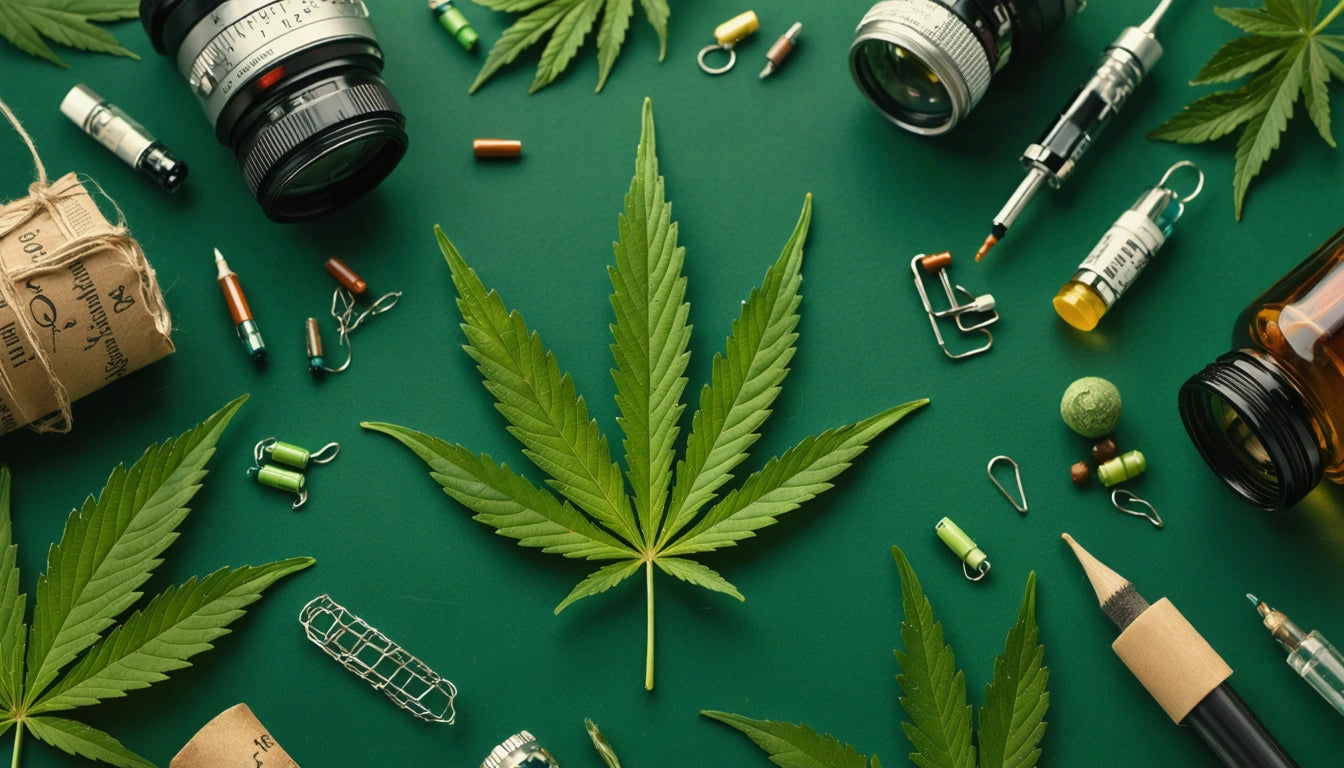Table of Contents
Understanding Sticky Weed: Causes, Significance, and Quality Indicators
Cannabis enthusiasts often celebrate particularly sticky flower, but what exactly causes this characteristic, and is it always desirable? If you've ever wondered "why is my weed sticky" or whether sticky cannabis indicates superior quality, this guide explores the science behind cannabis resin production, its significance, and how to properly assess sticky flower.
What Makes Weed Sticky: Understanding Trichomes
The stickiness in cannabis comes primarily from trichomes, tiny resin glands that cover the flower's surface. These crystalline structures contain the plant's essential compounds including cannabinoids (THC, CBD) and terpenes that give cannabis its effects and aromatic properties.
Trichomes serve several purposes for the cannabis plant:
- Protection against predators and pests
- Shielding from UV radiation and environmental stressors
- Deterring certain insects through aromatic compounds
- Attracting pollinators in some circumstances
When examining cannabis composition, trichomes are the factory where most active compounds are synthesized. The stickier the flower, the more abundant these resin glands typically are.
The Significance of Stickiness in Cannabis
If you're wondering "what does it mean when weed is sticky," it generally indicates high resin content. This stickiness has several implications for cannabis quality and consumption:
Potency Indicators
Sticky cannabis often contains higher concentrations of cannabinoids, potentially resulting in more potent effects. The resin houses most of the THC and other compounds responsible for cannabis's effects on the body and mind.
Flavor and Aroma Profile
Trichomes contain terpenes, the aromatic compounds that give each strain its distinctive smell and taste. Stickier cannabis typically offers more pronounced flavor profiles and stronger aromas, contributing to the entourage effect.
Factors Affecting Cannabis Stickiness
Several factors influence why some cannabis is stickier than others:
Genetics
Some strains naturally produce more resin than others. Certain genetic lineages have been selectively bred to maximize trichome production, resulting in exceptionally sticky varieties.
Growing Conditions
Environmental factors significantly impact resin production. Optimal lighting, particularly UV exposure, can trigger increased trichome development as the plant attempts to protect itself. Skilled cultivators can enhance resin production through various growing techniques.
Harvest Timing
The timing of harvest greatly affects stickiness. Harvesting at peak ripeness, when trichomes have fully developed but before they begin to degrade, results in the stickiest flower.
Curing Process
Proper curing preserves trichomes and their compounds. A slow, controlled cure allows chlorophyll to break down while maintaining resin integrity, resulting in sticky, aromatic flower.
Handling and Processing Sticky Cannabis
When dealing with particularly sticky flower, proper handling becomes essential:
Grinding Challenges
Sticky cannabis can be difficult to break down manually. Using quality grinder machines with non-stick surfaces can make processing significantly easier and preserve more trichomes during breakdown.
Storage Considerations
Sticky cannabis requires proper storage to maintain its quality. Airtight glass containers stored in cool, dark places help preserve trichomes and prevent them from degrading or sticking to packaging materials.
Handling Tips
When handling sticky cannabis:
- Keep hands clean and dry
- Use tools like tweezers when possible
- Store in appropriate containers that won't remove trichomes
- Consider refrigeration for short periods if extremely resinous
Understanding cannabis terminology can help consumers better communicate about stickiness and other quality indicators.
Stickiness as a Quality Indicator: What to Look For
When evaluating whether sticky weed is good or bad, consider these factors:
Natural vs. Artificial Stickiness
Not all stickiness indicates quality. Sometimes, cannabis may be sprayed with additives to mimic the appearance of high-quality flower. Natural stickiness should be accompanied by visible trichomes, a fresh aroma, and proper moisture content.
Visual Assessment
Quality sticky cannabis should display:
- Visible trichome coverage that sparkles under light
- Proper moisture balance (not too wet or too dry)
- Vibrant coloration appropriate to the strain
- Minimal stem and leaf material
Aroma Intensity
Truly resinous cannabis typically has a strong, complex aroma. If cannabis is sticky but lacks pronounced smell, it may indicate artificial additives or improper curing.
Effect Correlation
While stickiness often correlates with potency, individual responses vary based on tolerance, consumption method, and personal biology. Some individuals may respond differently to cannabis regardless of its apparent quality indicators.
Maximizing Cannabis Quality Beyond Stickiness
While stickiness is an important quality indicator, it's just one aspect of cannabis assessment. Experienced consumers consider multiple factors including terpene profile, cannabinoid content, cultivation methods, and proper curing when evaluating cannabis quality.
The answer to "is sticky weed good or bad" is nuanced. Natural stickiness from abundant, intact trichomes generally indicates quality cannabis with preserved compounds. However, consumers should develop a comprehensive understanding of quality indicators rather than relying on any single characteristic.
By understanding what makes weed sticky and how to properly evaluate resinous cannabis, consumers can make more informed decisions about their purchases and better appreciate the complex characteristics that contribute to cannabis quality.











Leave a comment
All comments are moderated before being published.
This site is protected by hCaptcha and the hCaptcha Privacy Policy and Terms of Service apply.